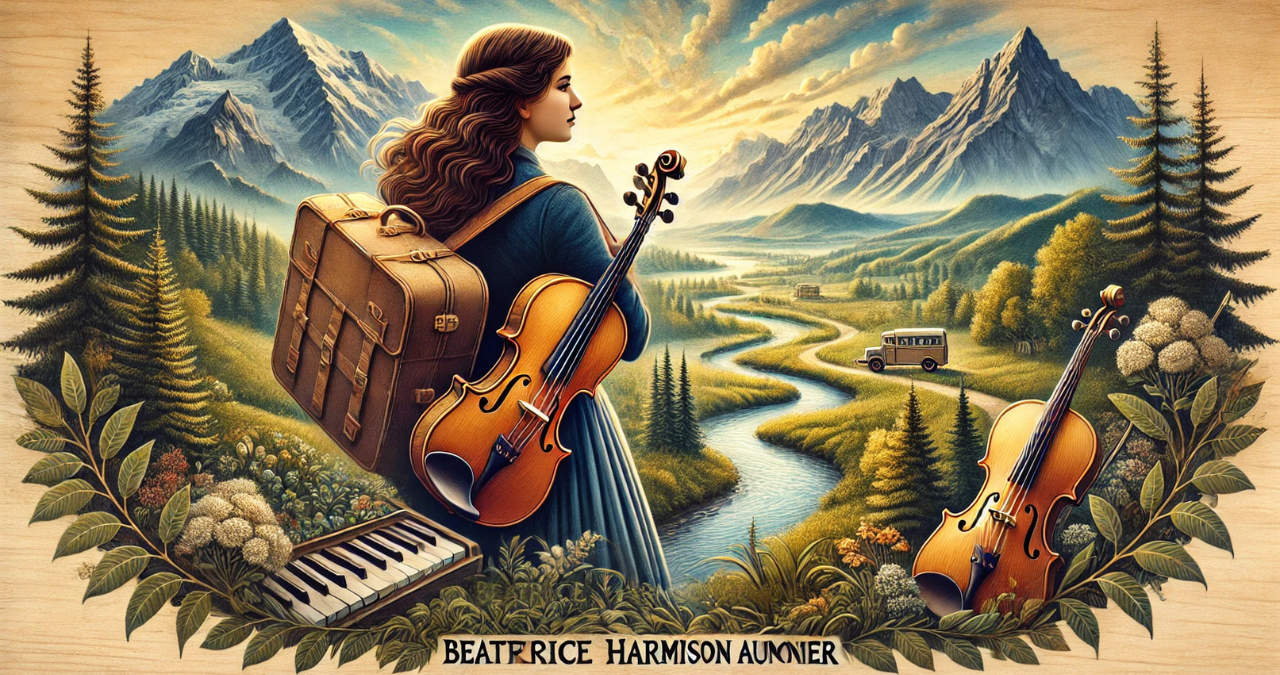Introduction
Beatrice Harrison Aumonier is an exceptional figure whose contributions to music and environmental conservation remain influential today. Often remembered for her remarkable talent as a violinist and her dedication to protecting the natural world, beatrice harrison aumonier life story is one of passion, innovation, and lasting impact.
Born at a time when both music and the environment were beginning to gain greater recognition, Beatrice Harrison Aumonier uniquely combined her two interests, making a name for herself as a trailblazer in both areas. This article delves into Beatrice Harrison Aumonier’s life and achievements, examining how she blended the art of music with the urgency of conservation efforts to leave a legacy that continues to inspire new generations.
Early Life and Education
Beatrice Harrison Aumonier was born into a family that valued creativity, intellectual growth, and cultural awareness. From a young age, she displayed an impressive aptitude for the violin. Her early education was grounded in classical traditions, with many of her formative years studying music. The influence of her family’s appreciation for the arts guided her toward a path that would see her become one of Britain’s leading violinists.
Her education was focused on classical music training, with Beatrice attending some of the most prestigious music schools in the country. She was immersed in an environment that fostered her creativity and honed her skills. Beatrice grew interested in the natural world alongside her musical training, becoming a central theme in her later life. During these years, she began to explore the intersection of music and nature, a pursuit that would define much of her career.
Career in Music
Beatrice’s career as a violinist was nothing short of extraordinary. Her talent stood out even in a field brimming with accomplished musicians, and she quickly made a name for herself as a skilled and expressive performer. Her proficiency on the violin, paired with a deep emotional connection to the music, allowed her to connect with audiences in a profound and captivating way.
Beatrice’s musical career took her across the United Kingdom and Europe, where she performed with some of the most prestigious orchestras and composers of her time. As a concert violinist, she played in numerous performances that gained widespread acclaim. However, what truly set her apart was her dedication to promoting lesser-known pieces of classical music. She used her platform to showcase the classics and bring attention to new and emerging compositions that were often overlooked.
Her work as a composer was equally significant. Beatrice composed several pieces that earned her respect and admiration from her peers. Her compositions were praised for their sensitivity to tone, emotion, and intricate technicality. In addition to her solo work, she collaborated with many other musicians, contributing to an ever-expanding repertoire of classical pieces. Through these collaborations, Beatrice’s reputation as an artist who bridged the gap between performance and composition grew stronger.
Conservation Efforts and Environmental Advocacy

While Beatrice’s musical career flourished, she began to channel her growing concern for the natural world into environmental conservation. She recognized the deep connection between music and nature and often incorporated elements of the natural world into her compositions. Her passion for the environment led her to become involved with various wildlife and conservation organizations, where she used her influence to advocate for preserving natural habitats.
One of the more unique aspects of Beatrice’s conservation efforts was her innovative approach to blending the beauty of nature with the art of music. She famously created a series of performances in which she played her violin in outdoor settings, allowing her music to intertwine with the ambient sounds of the natural world. This effort showcased her deep connection to nature and served as a powerful statement about the importance of preserving the environment.
In addition to her outdoor performances, Beatrice supported numerous environmental initiatives to protect endangered species and conserve natural resources. Her advocacy for the environment was not only limited to music but extended to public speaking, writing, and participation in environmental policy discussions. Through her work, she became a respected figure in the conservation community, leaving a lasting imprint on the field.
Legacy and Influence
Beatrice Harrison Aumonier’s legacy resonates within the musical and environmental communities. As a violinist, she influenced generations of musicians who admired her technical skills and expressive performances. Her work paved the way for future musicians to embrace a more holistic approach to performance that blends artistry with a commitment to social and environmental causes.
Her contributions to conservation also have had a lasting impact. Beatrice’s pioneering efforts in combining music and environmentalism helped to bring attention to the urgent need for conservation in an era when environmental issues were becoming increasingly critical. Her work inspired many to view conservation differently, emphasizing the importance of creative expression in advocating for change.
Today, Beatrice Harrison Aumonier’s work is remembered through the ongoing efforts of the organizations she supported and the musicians and environmentalists she inspired. Her legacy continues to be honoured through music performances and advocacy for conservation and environmental protection.
Conclusion
Beatrice Harrison Aumonier was not just a skilled violinist; she was a visionary who understood the profound connection between music and the natural world. Her contributions to both fields have left an indelible mark on history, influencing generations of musicians, conservationists, and environmentalists. Through her work, she demonstrated how the arts and nature could coexist and enhance one another.
Her legacy reminds us that creativity and passion can transcend boundaries, inspiring change in the arts and the environment. Today, Beatrice’s life inspires individuals to follow their passions, whether in music, conservation, or any other field, knowing that they, too, can make a difference.
FAQs
Q: Who was Beatrice Harrison Aumonier?
A: Beatrice Harrison Aumonier was a celebrated British violinist and environmental advocate. She was known for her unique approach to blending music with conservation efforts, significantly impacting both fields.
Q: What were Beatrice Harrison Aumonier’s most significant musical contributions?
A: Beatrice was known for her technical prowess as a violinist and her work as a composer. She performed with top orchestras and created compositions that inspire musicians today.
Q: How did Beatrice Harrison Aumonier contribute to environmental conservation?
A: Beatrice became a passionate advocate for the environment, combining her love for nature with her music. She supported wildlife conservation and used her performances to raise awareness about the importance of preserving natural habitats.
Q: Did Beatrice Harrison Aumonier receive any awards for her work?
A: While she did not receive many official awards during her lifetime, Beatrice’s contributions to music and conservation were widely recognized posthumously, and she continues to be celebrated in both fields.
Q: What is Beatrice Harrison Aumonier’s lasting impact on classical music and nature?
A: Beatrice’s work has inspired future generations of musicians to combine their passion for music with social causes. Her conservation efforts also helped raise environmental awareness, influencing the arts and ecological movements for years.
You May Also Read: https://businessworknews.com/aiden-langston-utah/




